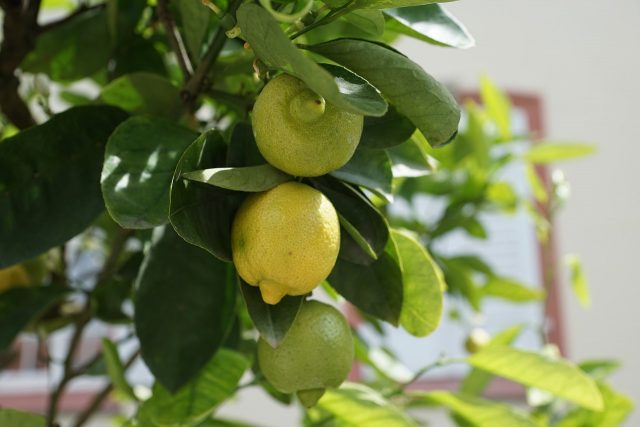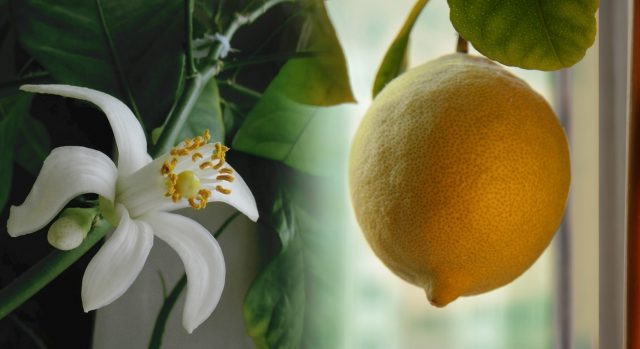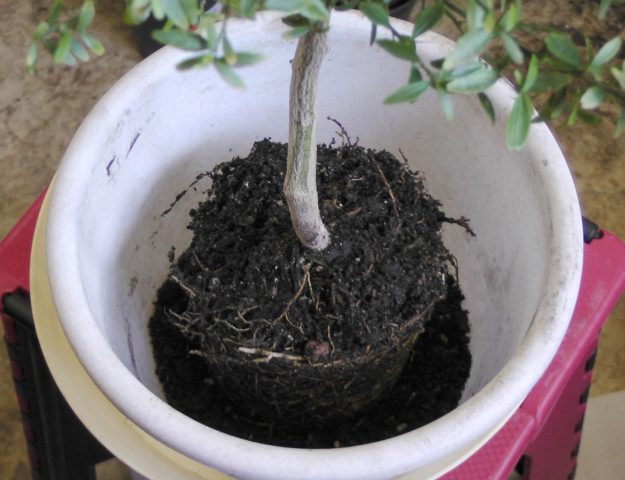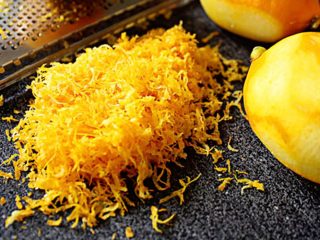Content
In any case, you will have to transplant the lemon into another pot if you decide to grow the citrus tree indoors. The plant needs sufficient space for vegetation and development of the root system. There are a number of cases when a transplant is carried out unscheduled. To ensure that the lemon takes root well and the procedure is less painful for the crop, floriculture experts recommend following certain rules.
Why do you need to replant a lemon?
Transplanting a lemon at home, one way or another, is an inevitable procedure. The plant is up to 3 years old; a year after planting, the soil and container are changed. The following season the procedure is repeated.From the 4th year of growing season, the soil and pot are replaced once every 24 months. After 8 years, the lemon is not touched, the tree begins to bear fruit and is considered mature. The period of biological maturation depends on the crop variety. Some varieties bear fruit earlier and others later. If the tree blooms, it means that the root system is fully formed and unnecessary stress is undesirable.
Lemons are transplanted into another pot for several reasons:
- If you purchase a plant in a shipping container, then replacing the pot will be necessary. There is no need to rush to transplant a lemon after purchase; you need to give the crop time within 3 weeks to adapt to the home microclimate. Then you need to water the soil generously and remove the tree together with the lump. If the roots are intertwined on the surface and extend beyond the soil, the procedure is carried out immediately.
- If a flower pot breaks, the tree is carefully removed from the fragments, the damaged fragments are cut off, and the root ball is wrapped on top with a damp cloth; the root can remain in this state for more than a day before purchasing a new flower pot.
- If roots protrude on the surface, thin shoots appear from the drainage hole, the lemon container is small, transplant the tree into a larger pot.
- If the growing season slows down, the crop bloomed, but did not set an ovary, it did not have enough micronutrients, fertilizing did not produce results. The cessation of fruiting is a sign of completely depleted soil and must be replaced.
- A crop with an incorrectly selected pot and incorrect watering schedule is prone to acidification of the soil. There is a musty smell and wine flies appear above the pot. This is a serious reason to replant the plant.
A mandatory change of soil is also necessary when pests or infections appear.
When can you replant a lemon at home?
The time to transplant lemons is from February to March; by the time of the growing season, the crop adapts to the new soil composition. If a disease or pest is detected, the lemon is replanted regardless of time; the emergency procedure is aimed at saving the tree. In all other cases, change the soil and container at rest.
You can additionally learn about recommendations for transplanting lemons at home from the video below:
When to replant a lemon grown from a seed
In order not to expose the seedling to unnecessary stress, plant the seeds of the crop in separate small pots. Lemon growth after germination is slow; all nutrients are used to build up the root system. When the young tree grows to 10-15 cm, it is transferred to a larger pot, about 4-5 cm. The lemon will intensively begin to fill the new space with the root system.
The soil for the seedling is chosen in the same way as the previous composition. After removal from the pot, the tree with the root ball is transferred. It is not recommended to replant indoor lemons into a pot that is too large; the plant will not allow the crown to grow until it fills the emptiness of the pot with roots. With a large container, there is a risk of soil acidification. Then the transplant is carried out as planned. Replacing the soil and pots is a necessary measure; the plant does not respond well to stress.
Is it possible to replant a blooming lemon?
A certain time of year is allocated for transplanting lemons, when the plant is in a state of relative dormancy.It is advisable not to touch the blooming crop. In case of emergency, if the plant is infected or parasites are progressing on it, then it is replanted at any stage of the growing season. There are also varieties that bloom all year round, but they also need a change in container and soil.
If the plant is healthy, it is transferred by transshipment, trying to minimally disturb the root. There is nothing wrong with this procedure; the crop masters the new soil composition well. The worst that can happen is that some of the flowers will fall off.
In case of development of a disease or accumulation of pests, the soil is completely removed, damaged roots and branches are cut off. Lemon is disinfected and treated with appropriate preparations. It is impossible to lose a tree, so even a flowering plant is replanted.
Is it possible to replant a lemon with fruits?
Replace the soil during fruiting only in emergency cases, if all measures taken to eliminate infection and pests have not given a positive result. If the leaves and young ovaries of a tree turn yellow, fall off, take drastic measures with pruning and processing. After transplantation, all fruits and flowers are removed. The chances of the plant taking root are slim.
Transplanting a lemon into another pot during fruiting is necessary if the growing season and fruit ripening have stopped, fertilizing is insufficient, and the soil is completely depleted. In this case, the plant is transferred to another container; as a rule, the ripening of the fruit is accelerated, and the lemon does not get sick.
Can you replant a lemon without foliage?
In favorable conditions, lemon does not shed its leaves, the plant is conditionally deciduous, skeletal branches are exposed for several reasons:
- insufficient lighting;
- dry air;
- temperature too low for citrus fruits;
- soil depletion;
- soil acidification and root rotting;
- insufficient watering, especially before 4 years of growth;
- damage by pests or infections.
There is no need to rush into an unscheduled transplant; it is necessary to exclude negative environmental factors. If they are not the reason, the plant is urgently replanted if the measure is vital. After 3 weeks, the crown will begin to gradually recover. A tree without leaves tolerates soil changes much better than during flowering and fruiting.
Is it possible to replant a lemon in winter?
In varietal varieties of crops, the so-called biological clock is triggered. In winter, sap flow and growth slow down, which is the best option for transshipment. In case of illness, the plant will more easily tolerate replanting in winter. The main condition is that the temperature and lighting remain familiar. Decorative hybrid forms bloom and bear fruit all year round; correctly replacing the soil and pot will not affect the tree.
Transplanting a lemon into a new pot
In order for the culture to take root well in a new place and quickly adapt, it is necessary to plant lemon correctly at home. An important role in the rooting process is played by the size of the pot and the composition of the soil.
Choosing the right container
The size of the new container for a young tree is 4 cm larger than the previous one. For an adult plant from 6 years old - 8 cm. Recommendations for using pots made of different materials:
- translucent dishes are undesirable; there is a risk of the root system becoming overgrown with moss. If the flowerpot is transparent, it is recommended to decorate the surface so that the dishes do not allow light to pass through;
- Before planting, a pot made of ceramic material is placed in water for several hours so that when planting, the clay does not absorb moisture from the soil;
- a plastic container requires a larger layer of drainage - the material does not absorb moisture, stagnation of water in the soil is undesirable;
- Wooden, voluminous tubs with a narrowed bottom are used for planting tall-growing varieties. The inside of the container is fired until black, the material will last longer.
Do not transplant the tree into a container that is too large. The main requirement for a pot is that it must have a drainage hole.
Preparing the soil for lemon transplantation
Preparatory work for changing the pot involves preparing drainage and soil mixture. Broken brick (fragments measuring 1.5*1.5 cm), fine gravel and crushed stone are used as drainage.
Land for planting lemon consists of:
- washed river sand (without clay) of a coarse fraction;
- peat, can be replaced with humus;
- turf layer or rotten last year's leaves.
All components are taken in equal proportions. The soil should be neutral or slightly alkaline; lemon will grow on acidic soils, but will not bear fruit.
How to treat lemon roots when replanting
Means for treating lemon root depend on the age of the plant. When replanting an adult tree by transshipment, the cuts are treated with ash or cinnamon. The root is fully formed; it does not need additional means for growth. If the transplant is urgent or the lemon is infected:
- The root is washed.
- Carry out sanitary cleaning.
- They are treated with biological antifungal agents “Gamair”, “Diskor”, Bordeaux mixture is suitable.
- Place 2-4 Glyokladina tablets in a new pot near the root; the drug will protect the plant after each watering for a period of 1.5 months.
When replanting, the roots of young lemons are treated with a manganese solution for prevention. Place for 30 minutes in a preparation that stimulates the growth of the root system.
How to replant a lemon correctly
Correct transplantation technology is the main condition for further growth of the crop. Recommendations for step-by-step lemon transplantation at home:
- Drainage is placed in a new container in increasing order, starting with large fractions. The drainage hole must not be blocked; a convex fragment is placed in this place. Layer for earthenware - 5 cm, for plastic - 10-15 cm.
- The nutrient mixture is poured on top with a 6 cm layer.
- On the lemon, mark a branch on the illuminated side in order to place the plant in the same position after replanting.
- The tree is filled with water and left for 20 minutes so that the liquid is well absorbed.
- Take out the lemon along with the root ball. If there are dry areas, cut them off. The sections are treated with ash, and the young tree is placed in a growth stimulator.
- Place the lemon in a new pot in the center. The empty space to the walls of the container should be no less than recommended for the appropriate age.
- Gradually add soil and compact it carefully so as not to disturb the roots or leave voids. The root collar is left on the surface and watered.
For 4 days, the pot is placed in a shaded place, then returned to its original position and placed with the marked side facing the sun. Thus, the plant finds itself in a familiar environment, and adaptation will be easier.
For an emergency transplant with a complete replacement of the soil, the preparatory work is similar. If the pot is not replaced, it is treated with hot water, then with formaldehyde. The soil for lemon is calcined. The root system is washed well, treated with antifungal agents and transferred to new soil.
How to replant lemon sprouts
The technology for transplanting sprouts is no different from replacing a pot for an older plant. Sequence of work:
- The soil near the sprout is watered.
- Using a wide spoon, remove the plant with a lump.
- The top is sprayed with a growth stimulator.
- The main aspect is that the container for the seedling corresponds to the root ball.
- The soil is poured 1 cm below the edge of the container.
- The root collar of the sprout is slightly deepened (by 1 cm).
- After planting, water with a weak solution of manganese.
Place in a place with sufficient lighting, but without direct sunlight on the leaves. Lemons do not react well to moving the pot from one place to another. It is not recommended to rotate a young plant.
You can also learn more about transplanting a lemon into a new pot from the video below:
Replanting lemons in the presence of pests
Frequent parasites on the plant are turtles and spider mites. Places of accumulation are not only the above-ground part of the plant, but also the soil. Replacing the pot and soil is a mandatory procedure. Algorithm of actions:
- The plant is removed from the pot.
- Place in a large container with water.
- They completely inspect the tree, wash off all insects from the crown with laundry soap, and from the trunk and branches using a toothbrush.
- Completely remove any remaining soil from the root. If there are damaged areas, they are cut off.
The pot is subjected to heat treatment, the old soil is thrown away.
Rules for caring for lemons after transplantation
After transplanting a lemon at home, care remains the same as before the procedure. Place the container in its previous place and maintain the microclimate familiar to the plant.
Watering schedule
From May to September, water the lemon every evening with a small amount of warm water. They are oriented along the ground; the top layer of soil should always be moist. To determine the amount of water for a plant, measure the thickness of the moistened layer. If it is more than 2 cm, the volume of fluid is reduced.
Top dressing
Lemon needs feeding within reasonable limits; too much will have the opposite effect; a tree with a healthy, lush crown will stop bearing fruit. Planned feeding is given 2 times at the beginning and end of summer. At intervals of 2 weeks, a mixture of ammonium nitrate and potassium salts is added, then fertilized with superphosphate and organic matter.
Unscheduled application is carried out if:
- leaves turn yellow and fruits are poorly formed - a sign of nitrogen deficiency;
- ovaries and leaves fall off - lack of phosphorus;
- fruits decrease due to leaves enlarging - potassium is needed.
If the tops of the crown dry out, the leaves become lighter, and the tree has stopped blooming, it needs iron.
Creating optimal conditions
An important condition for plant growth is the creation of a favorable microclimate and sufficient illumination. The light-loving culture does not tolerate shaded areas and open sunlight; place the pot on a windowsill on the east side or next to a south window. The light period for lemon is 16 hours; installation of lamps is recommended.
The temperature depends on the time of year and the biological state of the plant:
- for shoot vegetation – +170 C;
- fruit ripening – 220 C;
- in winter – 150 C.
The temperature should be constant; sudden changes are undesirable for lemon. Before placing it outdoors, the plant is gradually adapted to changes in temperature.
Air humidity is relevant in winter when central heating is operating. Spray the plant once every 5 days, wipe the leaves with a damp cloth, place a container of water near the pot, and do not place the crop near heating devices. In summer, lemons are irrigated less often; watering is enough for them.
Conclusion
It is necessary to transplant a lemon into another pot unscheduled if the plant is infected or is infested with insects. Change the soil if it is depleted; the volume of the pot is small for the root. When replanting, take into account the size of the container and the composition of the soil. The work is carried out according to the recommendations for transplantation.











